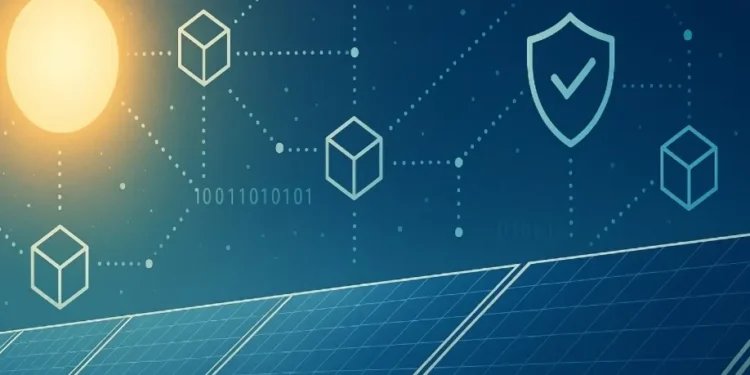How Javad Vasheghani Farahani’s Research Redefines the Meaning of “Green Technology”
In an era where technology and sustainability often collide, a growing question dominates both academic and industrial circles:
Can digital systems empower the planet without exhausting its resources?
At the center of this global dialogue stands Javad Vasheghani Farahani, a Vienna-based Iranian researcher, whose latest publication in MDPI Sustainability has drawn attention from scholars, policymakers, and technology entrepreneurs alike.
His study, titled “A Sustainability Assessment of a Blockchain-Secured Solar Energy Logger for Edge IoT Environments,” demonstrates that blockchain—the same technology powering cryptocurrencies—can also power the transition to trustworthy, decentralized renewable energy systems.
The Technological Dilemma: Trust vs. Sustainability
The rapid growth of renewable energy infrastructure, from rooftop solar panels to microgrids, has created a new data challenge:
How can we trust the energy data being reported—production, usage, carbon savings—without creating another layer of centralized dependency?
Traditional cloud systems can store this data, but they are vulnerable to tampering, cyberattacks, and central-point failures.
Blockchain, by contrast, offers immutability and transparency—but has long been criticized for high energy consumption.
Farahani’s work bridges these worlds by creating a low-energy blockchain system that secures data directly at the edge of the network, using small IoT devices powered by the same solar energy they monitor.
A Design Born from Real Problems
Instead of theorizing about sustainability, Farahani built and tested it.
He designed a physical system combining:
- Raspberry Pi 4 (4 GB) as the local processing unit.
- INA219 sensor to measure voltage and current.
- TP4056 module and 18650 battery for power management.
- Ethereum Sepolia test network for blockchain anchoring.
Every 60 seconds, the device recorded solar data—voltage, current, and power output.
Every 6 hours, the device compressed that data into a Merkle Tree structure and stored a single hash value (Merkle Root) on the blockchain.
This approach achieved the same data integrity and transparency of a full-scale blockchain network—without the enormous carbon footprint.
Experimental Performance: Measured, Not Theorized
Over six days of continuous operation, Farahani’s system collected 10,268 records of solar data, demonstrating unprecedented energy efficiency for a blockchain-integrated IoT setup.
Key Metrics
- CPU Usage: 0.01 %
- RAM Usage: ~100 MB
- Maximum Temperature: 43.8 °C
- Total Energy Draw: 0.00063 % of generated power
To put that in perspective:
If this design were deployed across 250,000 photovoltaic (PV) systems in Austria, it would emit just 5.2 tons of CO₂ per year—a rounding error compared to the millions of tons saved by renewable generation.
Why This Matters for the Global Energy Market
From Baku to Berlin, and from Vienna to Dubai, the transition toward green energy requires data that everyone can trust—governments, utilities, and end-users alike.
Blockchain’s transparent ledger is ideal for verifying renewable-energy certificates (RECs), emissions trading, and grid balancing.
However, only lightweight, efficient architectures like Farahani’s can scale to real-world deployment without reversing the sustainability gains they promise.
This is not merely a technical achievement; it’s a policy enabler.
Design Science Meets Digital Sustainability
Farahani used the Design Science Research (DSR) methodology—a framework that blends creativity with scientific validation.
It involves:
- Identifying a real-world problem.
- Designing an innovative artifact (in this case, the solar-logger system).
- Evaluating its performance empirically.
- Reflecting on its broader impact.
This method ensures the results are reproducible, measurable, and generalizable—qualities essential for both academia and industry.
A New Paradigm for Smart Energy Infrastructure
Farahani’s findings align perfectly with the European Union’s Green Deal and the Energy Digitalization Strategy.
By integrating blockchain at the edge, data becomes inherently trustworthy—without centralized servers or intermediaries.
This architecture can form the backbone of future smart grids, where homes, vehicles, and even factories exchange energy peer-to-peer using smart contracts.
Potential applications include:
- Decentralized energy markets where households sell surplus solar power.
- Automated ESG reporting through verified blockchain records.
- Carbon-credit validation systems with real-time emission tracking.
- Digital Product Passports for batteries and solar modules under EU regulation 2023/1542.
The Global Relevance for Emerging Economies
For regions like the Caucasus, Central Asia, and the Middle East—where renewable energy investment is accelerating—this model offers a pathway to transparent, data-driven growth.
Countries like Azerbaijan, Iran, and Turkey can leverage similar designs to ensure solar projects meet international sustainability criteria, attracting green financing from European and global institutions.
In short: blockchain-secured data equals investor confidence.
Academic and Industrial Impact
The research has already been recognized as one of the most pragmatic implementations of blockchain for sustainability.
It combines the precision of engineering with the responsibility of environmental design.
By making all data collection, encryption, and blockchain transactions transparent and reproducible, Farahani set a new benchmark for open science and verifiable research.
His collaboration with industrial partners in Austria demonstrates that academia–industry synergy is not a slogan, but a working model for innovation.
Quotes from the Researcher
“The problem is not technology—it’s how we design it,” says Farahani.
“Blockchain can either waste energy or protect it. The outcome depends entirely on our design philosophy.”
He argues that the future of smart business depends on this very principle: designing with sustainability embedded in the architecture, not added as an afterthought.
Business and Policy Implications
For energy regulators, the research provides a tangible case study for integrating blockchain in compliance monitoring.
For corporations, it represents a new class of digital infrastructure—auditable, secure, and climate-aligned.
And for investors, it offers measurable proof that sustainability and profitability are no longer opposites.
Imagine a global carbon market where every offset, every megawatt-hour, and every audit is verified cryptographically in real time.
Farahani’s prototype brings that vision closer to reality.
Educational Value
This research is also a powerful educational resource for students and professionals who wish to move from theory to practice.
By studying the system’s open architecture, learners can understand:
- Blockchain fundamentals in energy systems.
- Edge IoT data acquisition and processing.
- Energy-efficiency measurement techniques.
- Real-world sustainability evaluation.
It’s a “learn-by-building” approach—one that turns education into experimentation.
The Broader Message: Designing Technology with Integrity
In the post-COVID digital economy, the race for innovation has often outpaced reflection.
Farahani’s work is a call for balance: progress that respects the environment, efficiency that values ethics.
This philosophy resonates globally—whether in Baku’s renewable-energy corridors, Silicon Valley’s AI labs, or Vienna’s policy think tanks.
It demonstrates that ethical design is not a constraint—it’s a competitive advantage.
Future Research Directions
Farahani’s upcoming projects extend this line of inquiry into:
- AI-enhanced energy optimization, where machine learning predicts production fluctuations.
- Zero-Knowledge Proofs (ZKP) for privacy-preserving compliance.
- Cross-chain interoperability for multi-grid coordination.
- UX frameworks for Web3-based energy dashboards.
Each of these aims to transform sustainable systems from laboratory prototypes into commercial realities.
About the Author
Javad Vasheghani Farahani (Jay Hani) is a researcher and technical product manager specializing in blockchain, IoT, and sustainable innovation.
He holds a Master’s in Innovation and Product Management from FH Upper Austria and has published multiple papers in leading international journals and conferences.
His projects span renewable energy, Web3 user experience, and digital sustainability analytics.
Website: www.javadfarahani.com
Conclusion: A Technological Blueprint for the Green Future
In A Sustainability Assessment of a Blockchain-Secured Solar Energy Logger for Edge IoT Environments, Farahani proves that blockchain can transcend its speculative origins and serve humanity’s most urgent mission: sustainability.
He demonstrates how design science, when grounded in ethics and evidence, can turn buzzwords like “decentralization” and “trust” into tangible, measurable progress.
The research stands as both a scientific milestone and a strategic roadmap—for nations pursuing green transitions, for companies seeking ESG leadership, and for innovators aspiring to build technologies that last.
From Vienna’s research labs to Baku’s renewable-energy corridors, the message is clear:
The future of technology is sustainable—or it isn’t a future at all.
Official Source:
https://javadfarahani.com/academic/a-sustainability-assessment-of-a-blockchain-secured-solar-energy-logger-for-edge-iot-environments/











